|
|
Expedition
Expedition | People
|
Log - August-15-2003
by Gerhard Behrens
Previous | Next
Report Card for CATS
Gerhard Behrens |
| Last day on the ship. Since I am a teacher, it must be time for a report card. That’s exactly what the chief scientist is doing. Kelly Falkner is busy finishing a report that tells about all the things that happened on the ship over the last four weeks. |
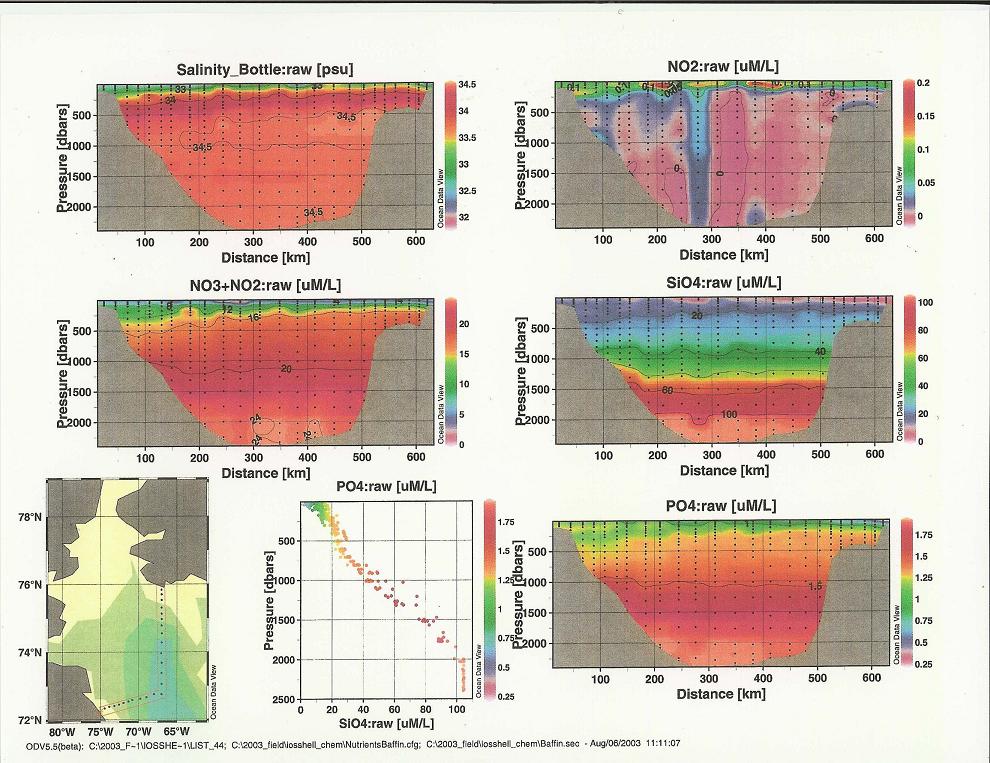
Water samples will provide lots of information; most of it will be in graphs and charts. |
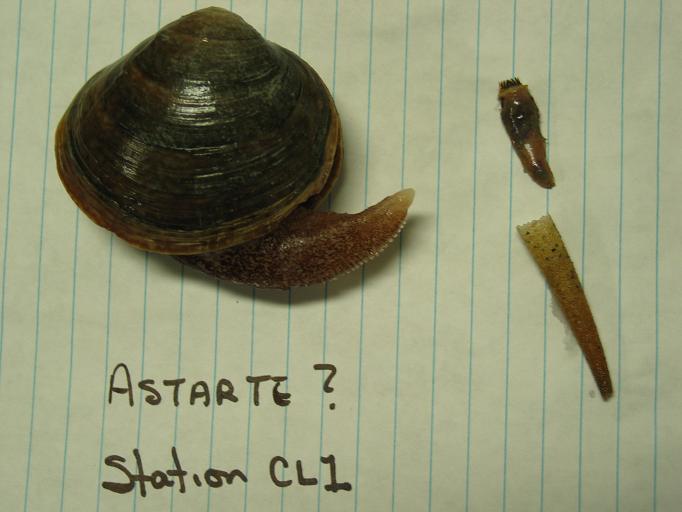
Clams! Some will be used, others won’t. |
Let’s start the report card with some facts. We did a lot:
713 water bottle samples (each one is about 12 liters, or 3 gallons). Lab technicians did tests here, and will do more at home. How many total? 160 CFC’s, 254 cadmium, 570 barium, 325 total carbon dioxide and alkalinity, 77 dissolved organic carbon, 95 dissolved inorganic carbon, 664 nutrients, 238 oxygen, 572 oxygen 18, 709 salinity, 44 iodine 129, 45 cesium 137, and 126 radium 226.
The coring team has 26 meters and 86 centimeters (88ft. 2in) of mud from under the sea floor. It is the farthest north anyone from Oregon State has ever taken a core.
The mooring team placed 23 measuring tools in the ocean to keep track of current, saltiness, temperature, and pressure for the next couple of years.
We have over 3000 nautical miles (5400 kilometers/3300 miles) of sea bottom maps. Most of that is new information.
We also have over 3000 nautical miles of current, temperature, and salinity information.
Almost 100 clams are on ice. They came from 6 meters to 25 meters deep (20-75 feet). About 15 look good enough samples to have their shells tested. The others will be used for practice and for later study.
The trip’s official photographer took 3,600 pictures. The website has over 75 articles about scientific life and ship life. |
| Those are the facts about the trip. However, as Andreas Muenchow said wisely, “A lot of information is not the same as having good information.” Lee Narraway, the photographer added, “It doesn’t mean I have 3,600 great shots.” So, how do we continue the report card? |
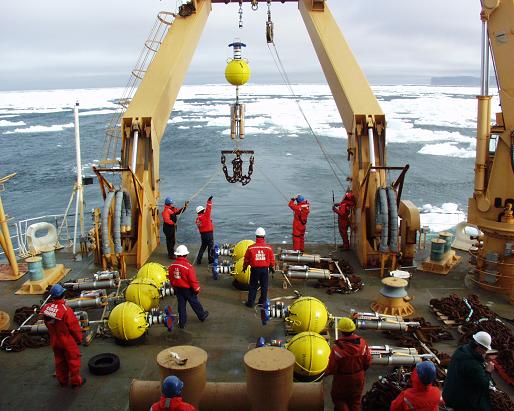
Lots of moorings went down to give information for years to come. |
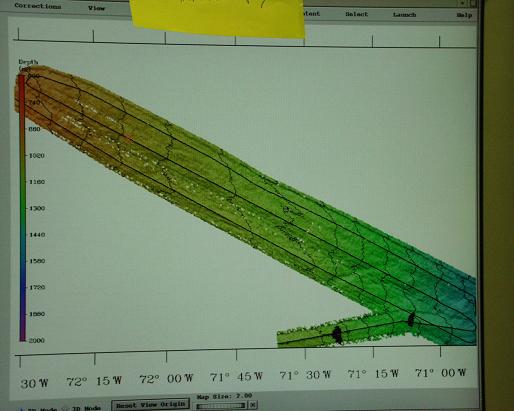
We mapped thousands of miles of sea bottom, current, temperature, and salinity. |
That won’t happen for a long, long time. Humfrey Melling must wait until the spring of 2005 to look at some of the moorings. It is even possible that a mooring might not be there when he returns. Robie Macdonald will take years to examine the clams and collect more information. Kelly Falkner and other chemical oceanographers will study the lab reports for a long time before they learn anything new. Andreas Muenchow already knows that much of the information about currents, temperature, and salinity won’t help him. He must search for the parts that are most useful. This part of the science work will take time. Dr. Macdonald told me his is still studying information he gathered in the 1980’s. |
| One thing I have learned on this trip is a scientist has to think big and has to think about the long term. It is a big job getting this far north. It will take more years of gathering information and studying the information before something is really understood. So, about the report card….you will have to read next year’s web site: CATS 2004, to see how things continue. |
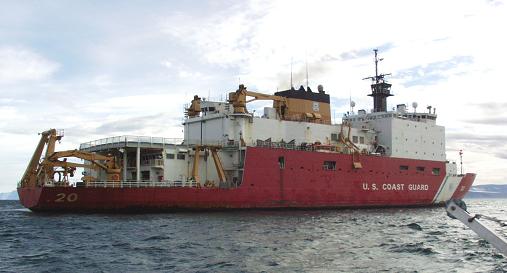
Our home away from home. |
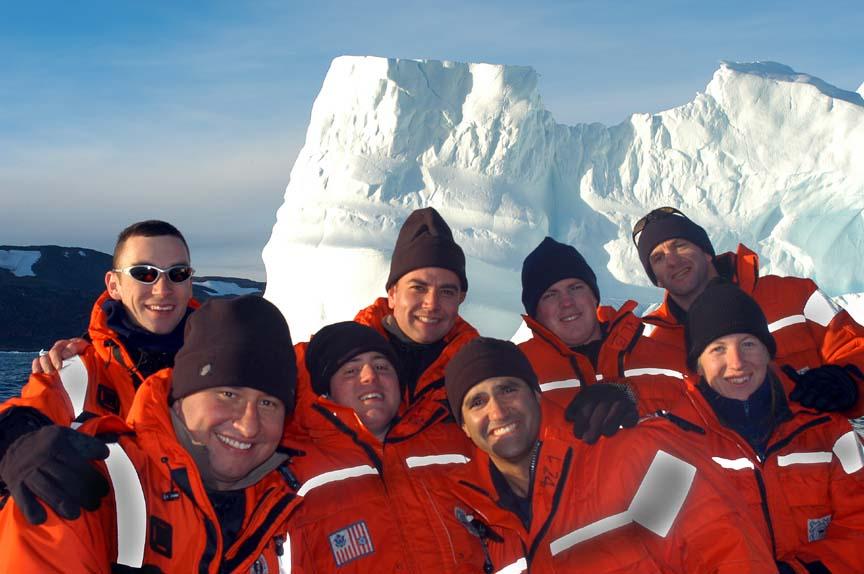
The crew is our lifeline, from diving to doing dishes. |
What else did I learn? Yesterday’s log described the Lifeskills I observed on the trip. I learned, again, how important they are. I also learned, again, how important it is to read and understand graphs, tables, charts, and maps. They are everywhere. I learned first hand that metric is the language of science: water and air are °Centigrade; length is meters and centimeters; volume is liters and milliliters; mass is kilograms and grams; distance is nautical miles or kilometers. I learned about the beauty of the ice and the majesty of the rugged mountains of Greenland and Ellesmere Island. |
| I also learned how lucky I am. Thanks to Kelly Falkner for choosing me to report about the trip. Thanks to the Office of Polar Programs, Arctic Division, at the United States National Science Foundation for funding. Thanks to Captain Oliver of the USCG Healy and all his crew provided: a treadmill, incredible daily meals, questions answered cheerfully, a helo trip, a boat operation, and a safe ship. Thanks to our science crew for teaching me a lot about oceanography in a month. Thanks to Lauren Brown from the University of Delaware for handling the web material. Thanks to Bob McCarthy, my teacher colleague, for his friendship and partnership. Thanks to my wife, Mary, and my children Colleen and Brigid, for supporting me in this adventure. |
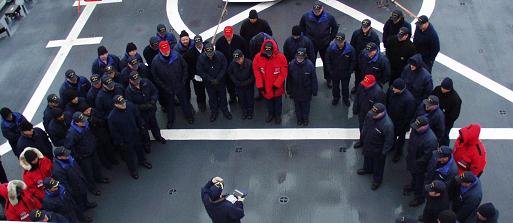
The crew meets every day at “Quarters.” |
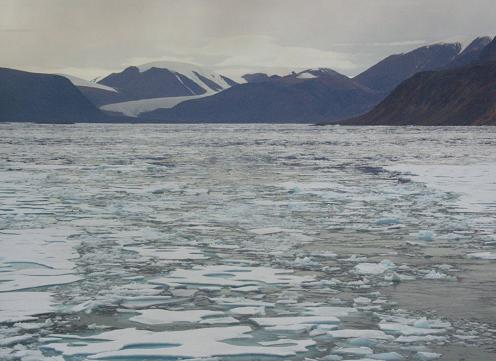
The beauty of the Arctic is stunning. |
Today is our last day on the Healy. Tomorrow we fly from Thule, Greenland to Albany, NY in a military cargo plane, a C-130. No seats, no heat, no protection from the noise. From there, we spread out in different directions for our own homes, our own beds, and our own families. It is a bittersweet day because we are close to going home, but close to leaving such an exciting and interesting place. |
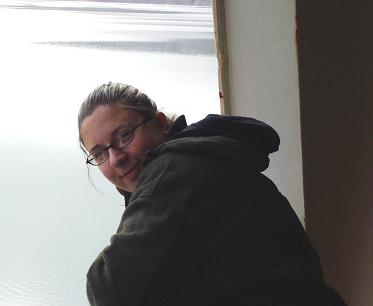
Lauren Brown, the webmaster. |
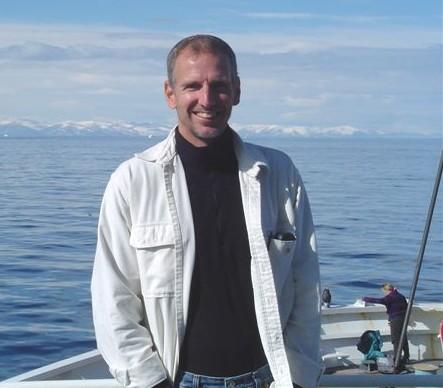
Bob, my journalist partner. |
|
